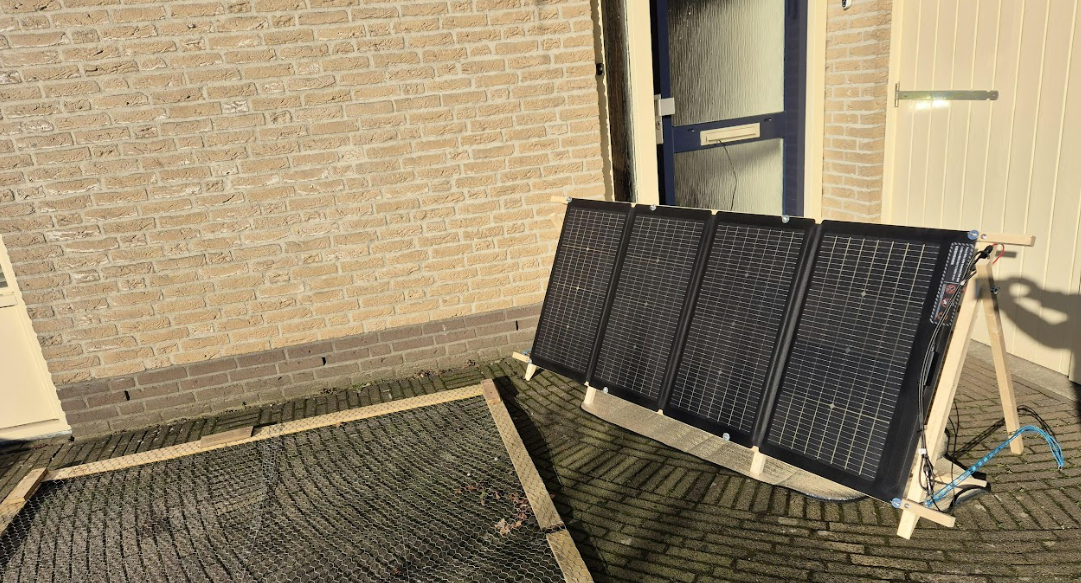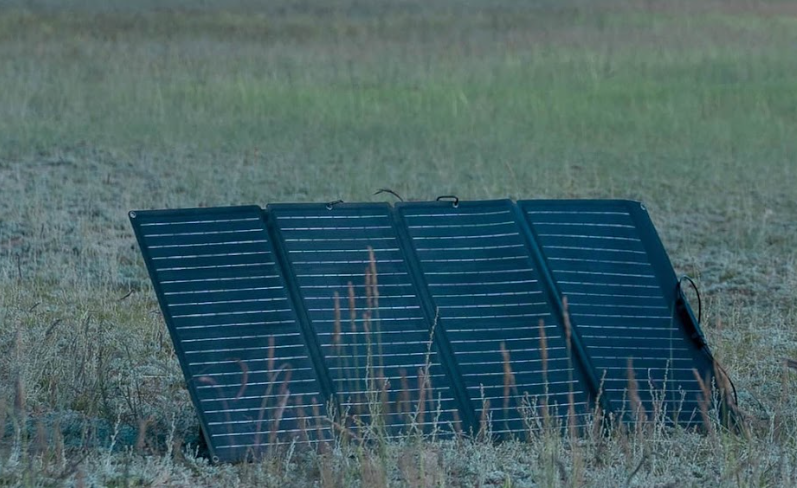A Guide to Monitoring Your Home Solar System's Energy Production and Usage
- What Is Solar System Monitoring?
- Monitoring Methods and Tools for Your Home Solar System
- Features of Modern Home Solar Monitoring Systems
- Three Steps to Set Up and Use Solar Monitoring
- Benefits of Effectively Monitoring Your Home Solar System
- Build a Smarter, More Efficient Home Solar System!
- FAQs About Home Solar System Monitoring
Home solar systems are a significant investment, and keeping a close eye on their performance is essential for maximizing returns and ensuring long-term reliability. If you have installed solar panels or are considering doing so, monitoring both energy production and household consumption offers numerous advantages. Accurate tracking allows you to identify issues early, optimize your energy usage, and boost system efficiency.
What Is Solar System Monitoring?
It's important to keep an eye on how well your solar system is working so you can keep it running efficiently and save as much energy as possible. With reliable monitoring, you can see both how much power your portable panels are making and how much power your family uses.
The Basics and Key Metrics
Solar system monitoring refers to the process of collecting, analyzing, and displaying data about your solar panels’ performance and your home’s energy usage. Effective monitoring keeps you informed about how much electricity your panels are producing, how much energy your household is consuming, and whether your system is running optimally.
Several key metrics are tracked:
- Energy Production: The total amount of electricity generated by your solar panels over time.
- Energy Consumption: How much electricity your household uses, both from solar and the grid.
- System Health: The operational status of each component, including inverters and panels.
- Efficiency: How effectively your system converts sunlight into usable electricity.
By monitoring these factors, you can quickly spot performance drops, unexpected outages, or inefficiencies that may require attention.
Components Involved in Monitoring
A comprehensive monitoring setup typically includes several hardware and software elements:
- Solar Inverter: Most modern inverters come with built-in or external monitoring capabilities. They serve as the central hub for data collection.
- Energy Meters: These devices measure the flow of electricity between your solar system, your home, and the grid.
- Environmental Sensors: Devices that track temperature, sunlight intensity, and other factors influencing solar output.
- Monitoring Platforms: Mobile apps, web dashboards, or dedicated display units present the collected data in a user-friendly format.
Each component plays a role in providing a clear and accurate picture of your system’s performance.
Monitoring Methods and Tools for Your Home Solar System
There are many different ways to keep an eye on how well your home solar system is working. Selecting the correct combination of technologies means you receive rapid, reliable information about both energy production and consumption, supporting informed decisions and long-term efficiency.
Inverter-Based Monitoring
Many solar inverters incorporate built-in LCD monitors that show real-time production data. You can instantly check the status of your system without any extra equipment. Manufacturers often offer apps or web sites that give you more detailed information. These platforms help you access past data, compare production across multiple eras, and receive updates regarding system health.
Standalone Monitoring Systems
Standalone monitoring systems have extensive analytics for people who want more information. Energy meters and environmental sensors give detailed information on both production and consumption. These tools give you a complete picture of your home's energy use when used with home energy management systems. This helps you find patterns and ways to save money.
Remote and App-Based Monitoring
Mobile apps have changed the way we monitor solar energy systems by letting you see system data from anywhere right now. Real-time alerts tell you of abnormalities or maintenance needs, ensuring rapid reactions to possible issues. Web-based dashboards give you a full picture of your data, making it easy to spot trends and improve system performance over time.
Direct PC and Display Unit Monitoring
Some systems can connect directly to a PC using Bluetooth or cable connections. This lets you log and analyze data in great detail. Wireless display modules make things even easier by showing crucial performance indications on a separate screen in your house. These options are for people who like to work with their energy data directly.


Features of Modern Home Solar Monitoring Systems
Today’s home solar monitoring systems go far beyond basic data tracking, offering a suite of advanced features designed to enhance efficiency and convenience. These capabilities provide homeowners with actionable insights and greater control over their energy use.
Real-Time and Historical Data
Modern monitoring platforms provide both immediate and long-term insights. Real-time tracking shows current production, consumption, and system status, while historical data reveals trends and seasonal variations. This dual perspective helps you understand how your system performs under different conditions and across various time periods.
Alerts and Notifications
Automated alerts are a crucial feature, notifying you of anomalies such as sudden drops in production, inverter faults, or maintenance requirements. Timely notifications allow for quick intervention, minimizing downtime and protecting your investment.
Comparative and Predictive Analytics
Advanced systems compare actual performance against expected output, taking into account weather data and historical trends. Predictive analytics can forecast future production based on sunlight patterns and anticipated consumption, supporting informed decisions about energy use and potential upgrades.
Integration with Smart Home Systems
Many monitoring platforms can integrate with smart home devices, creating a unified energy management ecosystem. This compatibility enables automated responses to changing conditions, such as adjusting thermostat settings or scheduling appliance use during periods of peak solar generation. The result is greater efficiency and convenience.
Three Steps to Set Up and Use Solar Monitoring
To effectively manage your solar system, you can follow a few simple steps. This process ensures you are set up correctly from the beginning and know what to look for as you get used to monitoring your home's energy.
Step 1: Activate Your Monitoring Platform
Your first step is to activate the monitoring software. Using the information from your installer, download the manufacturer’s app and create your personal account. Once the system is connected to your home's Wi-Fi, log in and take a few minutes to explore the dashboard. Locate the main features, such as real-time production and daily energy totals, so you know how to find key information about your system's performance.
Step 2: Develop a Regular Checking Routine
Establish a habit of checking your system’s performance regularly. A quick look at the app every few days will help you learn what a normal production curve looks like—typically a smooth arc on a sunny day. It's also useful to review the monthly summary reports, which allow you to track overall performance and verify the savings on your utility bills over time.
Step 3: Learn to Identify and Respond to Issues
Use the monitoring platform as your primary tool for troubleshooting. Pay close attention to automated alerts for faults or connection losses, and contact your installer if you receive one. Proactively look for trends, like a gradual drop in output on sunny days, which might mean your panels need cleaning. If production stops suddenly, check for a tripped breaker before calling for service.
Benefits of Effectively Monitoring Your Home Solar System
Actively monitoring your solar system provides several practical advantages that help you get the most out of your investment. It transforms your system from a passive installation into a resource you can actively manage for better results.
Maximize Your Financial Savings
The best thing about keeping an eye on your money is that it helps you save as much as possible. You may check that the system is working as promised and making enough power to cut your utility bills by keeping track of how much energy it makes each day. You'll know right away if production drops, so you can fix the problem and protect your investment.
Catch Problems Early to Avoid Costly Repairs
Your monitoring system functions as an early warning system for potential hardware concerns. A rapid decline in efficiency or an automatic alarm can let you know about a problem, such as a broken panel or inverter, long before it becomes a big problem. This early identification cuts down on system downtime and helps you avoid more costly repairs that aren't covered by the warranty.
Optimize Your Household Energy Use
Monitoring lets you see when your panels make the most energy and when your home uses the most. You can make better choices about how much electricity you use with this information. For instance, you may do high-energy tasks like running the dishwasher, doing laundry, or charging your electric car in the middle of the day so you can use the "free" solar power you make instead of getting electricity from the grid, which costs money.
Build a Smarter, More Efficient Home Solar System!
Monitoring your home solar system is not just a technical task—it’s a proactive approach to protecting your investment, optimizing energy use, and contributing to a more sustainable future. By leveraging modern tools and following best practices, you can ensure your solar panels deliver reliable performance and long-term savings. Regular monitoring, timely maintenance, and smart integration with your home’s energy systems will help you achieve the full potential of your solar installation.


FAQs About Home Solar System Monitoring
Q1: What information does a solar monitoring system actually track?
A solar monitoring system tracks four key metrics to give you a complete overview of its performance. It measures your total energy production (how much electricity the panels generate), your home's energy consumption (how much electricity you use), the general system health to ensure components are working correctly, and the overall efficiency of how well sunlight is being converted into usable power.
Q2: How can I check my solar system's performance?
You can check your system’s performance in several ways. The most basic method is by looking at the built-in LCD screen on your solar inverter for real-time data. For more detailed information, the most common method is using the manufacturer-provided mobile app or web dashboard, which shows both current and historical performance data from anywhere. Some setups may also include dedicated in-home display units.
Q3: Will my system automatically notify me if something is wrong?
Yes, modern monitoring systems are designed to alert you to potential issues. They send automated notifications via app or email for anomalies like a sudden drop in energy production, an inverter fault, or if the system loses its connection. This feature allows you to contact your installer for quick intervention, which helps minimize downtime and prevent more serious problems.
Q4: How does monitoring my system help me save more money?
Monitoring helps you maximize savings in two primary ways. First, it confirms that your system is operating at peak performance, ensuring you get the full financial benefit on your utility bills. Second, by showing you when you produce the most excess power, it allows you to shift high-energy tasks like doing laundry or charging an EV to those times, so you use your own free solar energy instead of buying it from the grid.